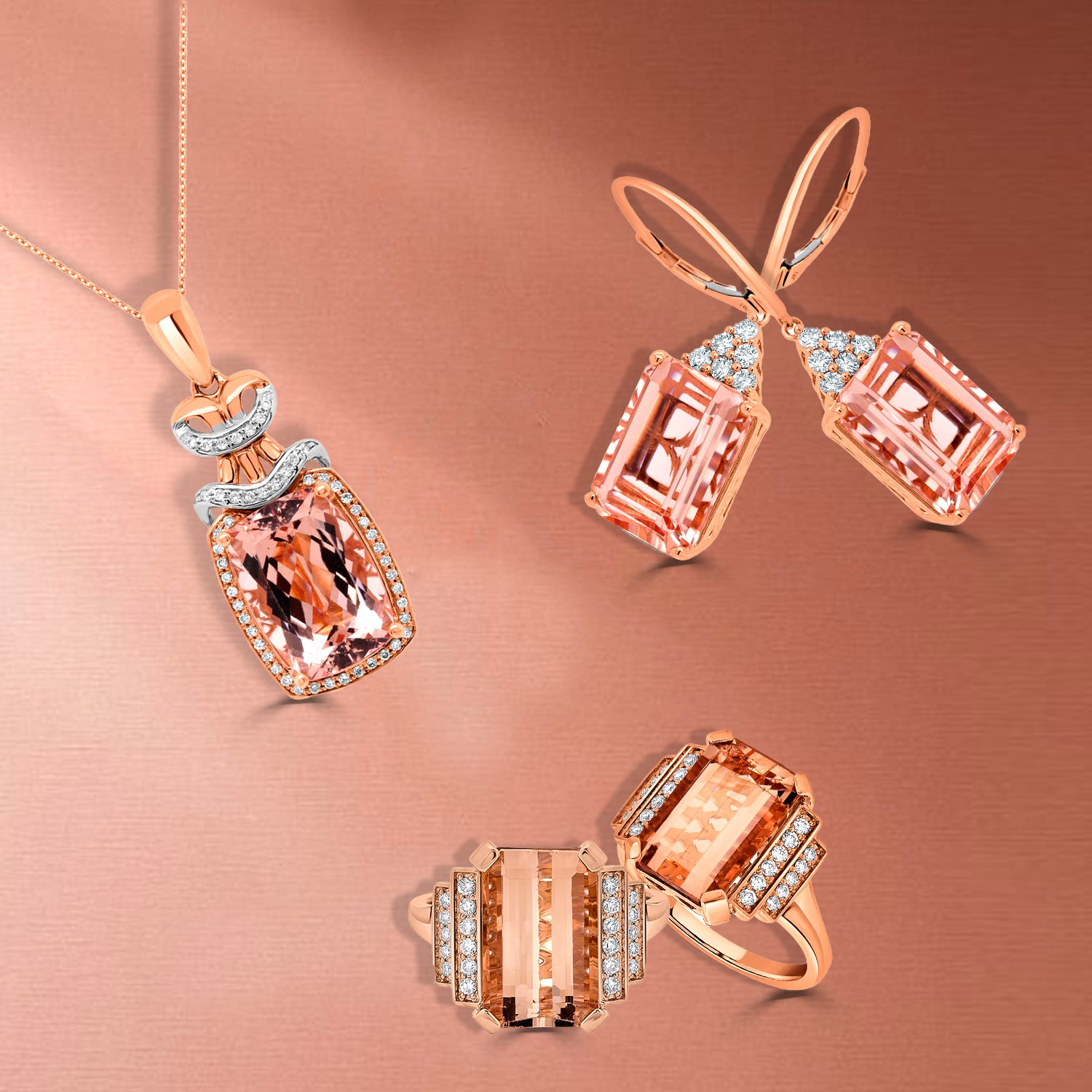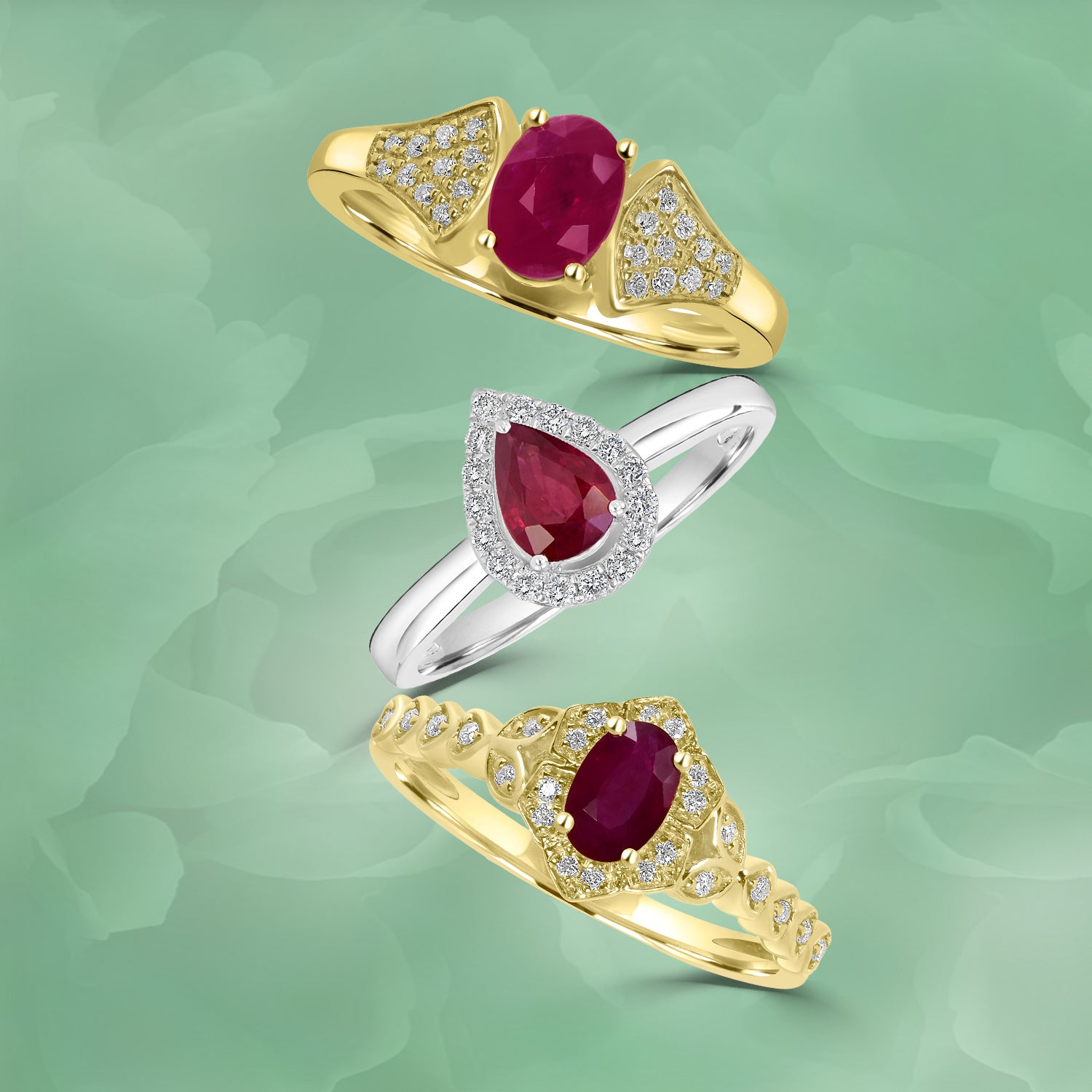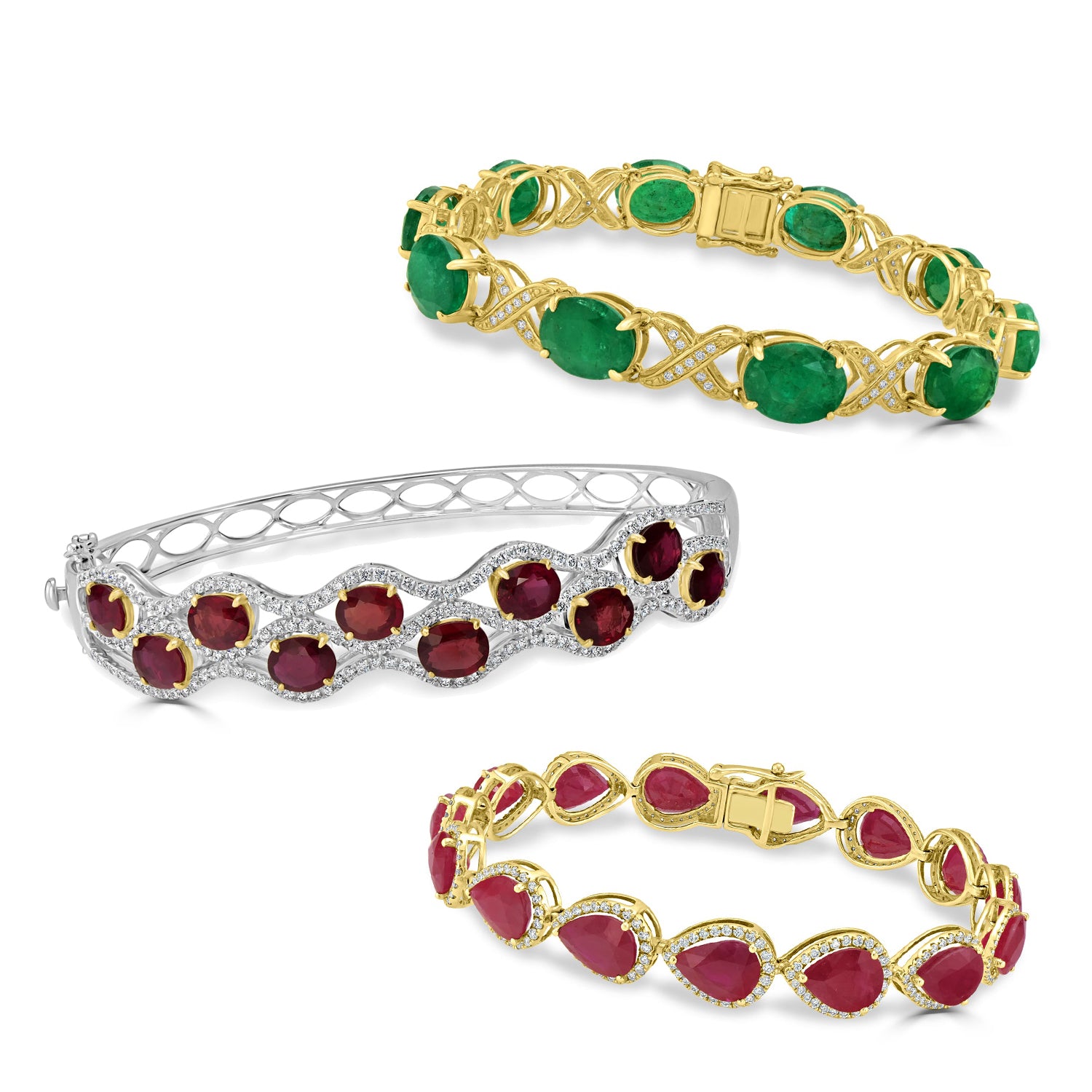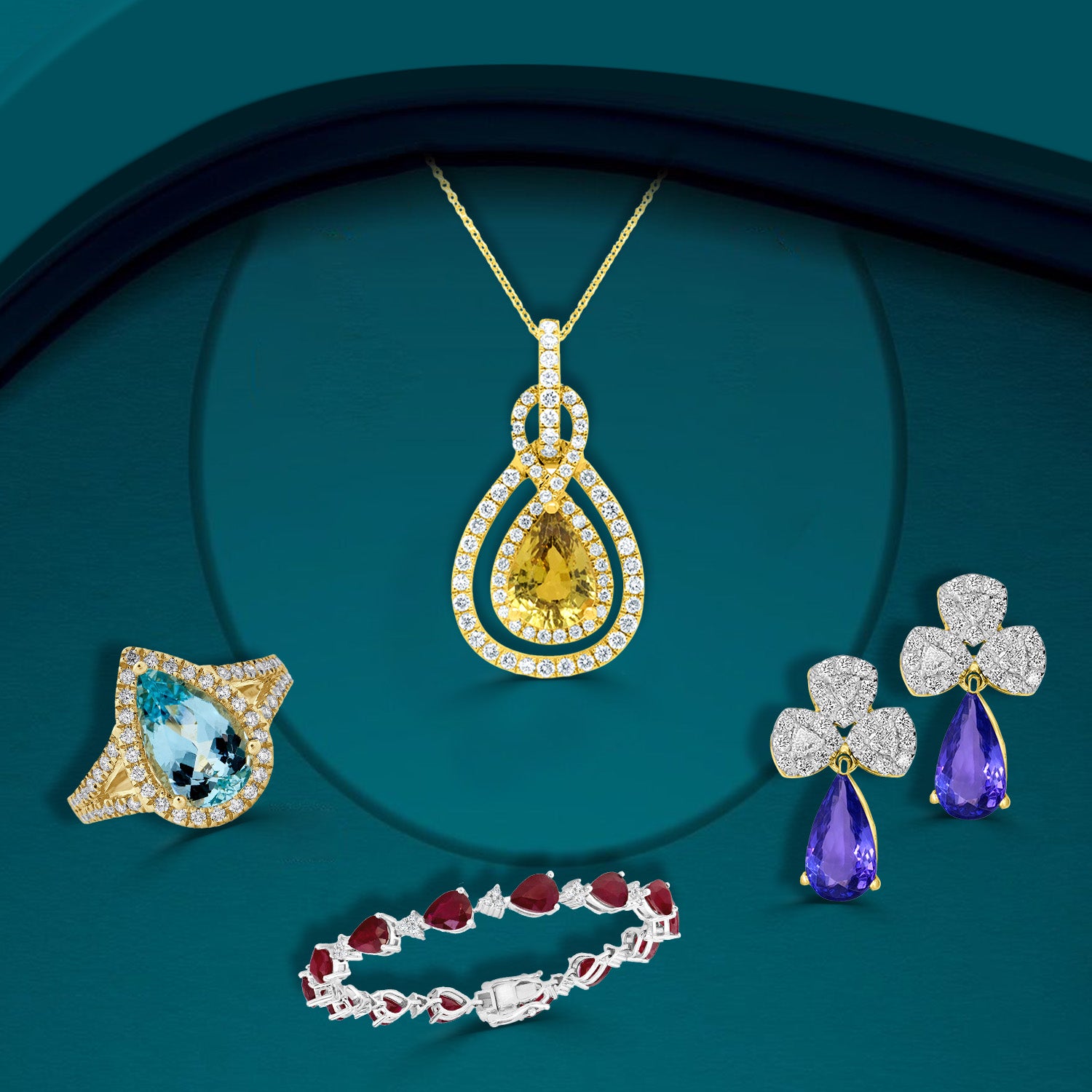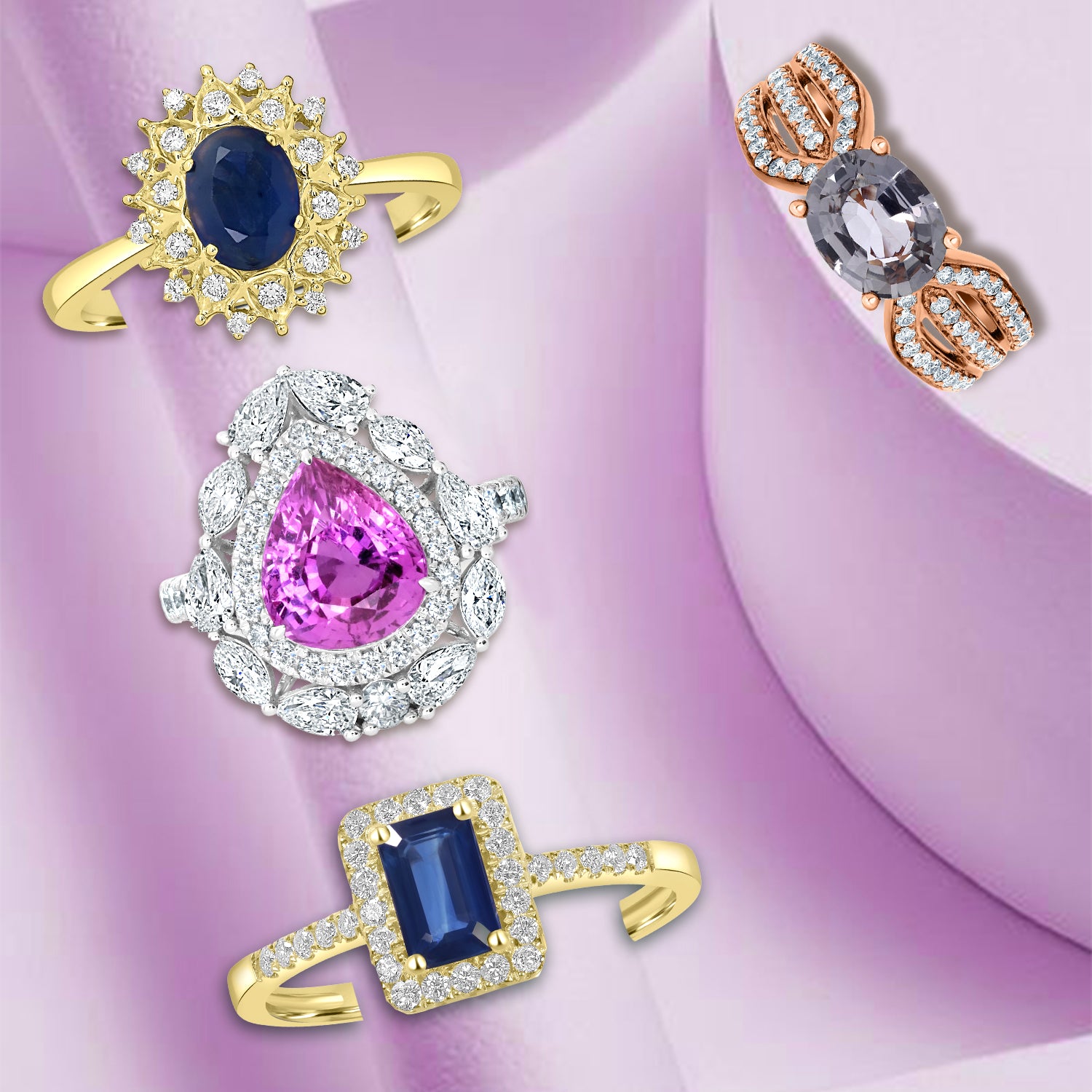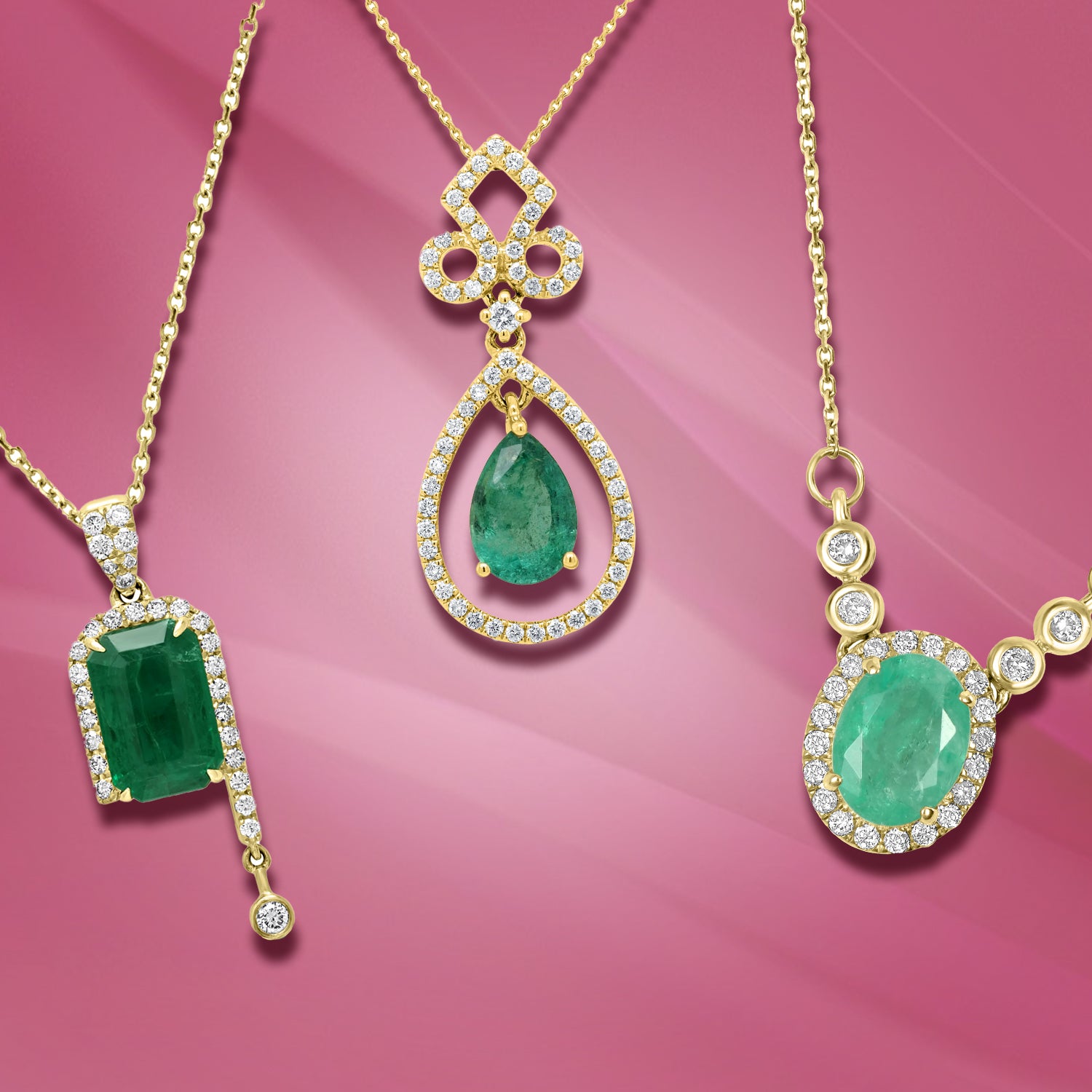- No products in the cart.
Gemstones are formed in single or multiple discrete crystals, in massive collections of microscopic crystals, or in amorphous masses. There are several classes of crystal structure based on the symmetry of the resulting crystals, and there are also non-crystalline minerals used as gem materials.
Based on the crystal axes and the angles at which they intersect, crystals are divided into seven systems - Cubic, Tetragonal, hexagonal, trigonal, Orthorhombic, Monoclinic, and Triclinic. To better understand the structure, here’s a quick look at these seven crystal systems:-
Tetragonal System
In this, the three axes intersect at right angles. Two axes with the same length are positioned in the same plane. The main axis can be either longer or shorter, resulting in a triangular shape. Zircon is a gemstone that comes under this category. Due to the tetragonal structure, strength and durability, zircon is an ideal choice for spectacular, long-lasting jewelry.
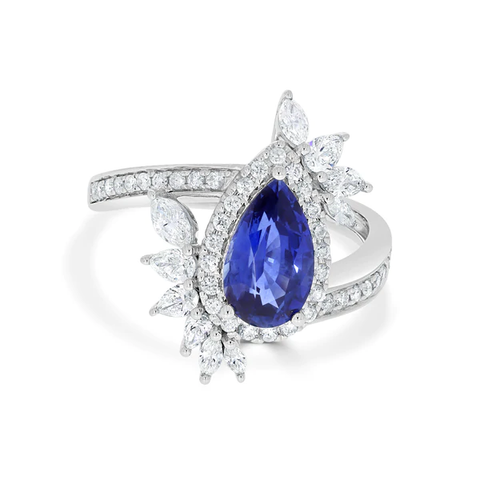
Hexagonal system
Here, three of the four axes have the same length and are located in one plane. These axes intersect each other at an angle of 120 degrees. Apatite, Goshenite and Emerald are some minerals with a hexagonal structure. The emerald is the most valued gemstone in this category due to its rarity. It is also a symbol of true love, thus popularly used in making emerald engagement rings and many other exquisite jewelry pieces.
Trigonal system
Axes and the angles here are similar to the hexagonal system. The difference is one of symmetry. In the hexagonal system, a six-sided prism base is formed by the cross section; whereas, it is three-sided in the trigonal system. This makes Amethyst, Ruby, and Sapphire similar to hexagonal minerals, with just a symmetrical difference.

| Shop Now | » | Rings | Engagement Rings | Wedding Rings |
Orthorhombic system
In this system, three axes of different lengths are at right angles to each other. Due to its pleochroic property, Alexandrite is a color-changing gemstone; it switches from one color to another, depending on the particular type of lighting. An alexandrite engagement ring, for example, will exhibit an elegantly unique charm with its changing hues.
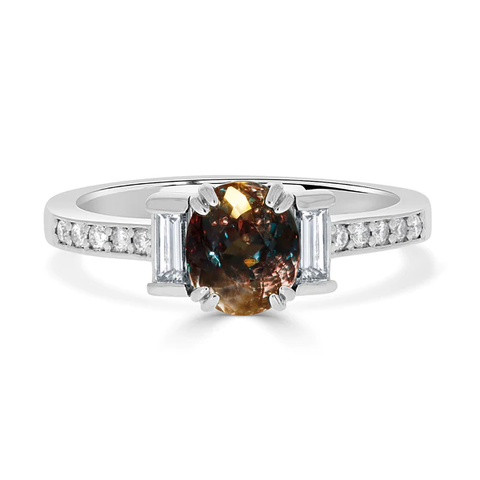
Monoclinic system
All the axes are of different lengths. Two of the three axes are right angles to each other, while the third one is a bit inclined. Gemstones from monoclinic systems form basic shapes of basal pinacoid, and Moonstone is the most prominent mineral in this category.
Triclinic System
These three axes have various lengths and are all inclined to one another. Rhodonite, for example, is a typical crystal structure with paired faces. Rhodonite jewelry is a wonderful present to signify strength and unity because it is regarded as a stone of compassion and emotional healer.

Cubic System
Here, all three axes have the same length and intersect each other at the right angle. Perhaps this is the reason behind the enormous strength of Diamonds. Regarded as one of the most precious, diamonds belong to the cubic system.
When it comes to gemstones or the jewelry made from them, be it colored diamond rings or emerald bracelets, or anything else, every crystal has some organic materials that have been used traditionally as gem materials.
We at GemBleu, are involved in every step of jewelry creation, from mining, cutting, and polishing to quality control mechanisms and fabulous designs. Our passionate team of gemstone experts are always available to help you understand the intricacies of each piece we have for sale. Visit our website to know more about our latest designs, collections and exciting offers and follow us on social media for instant updates.



